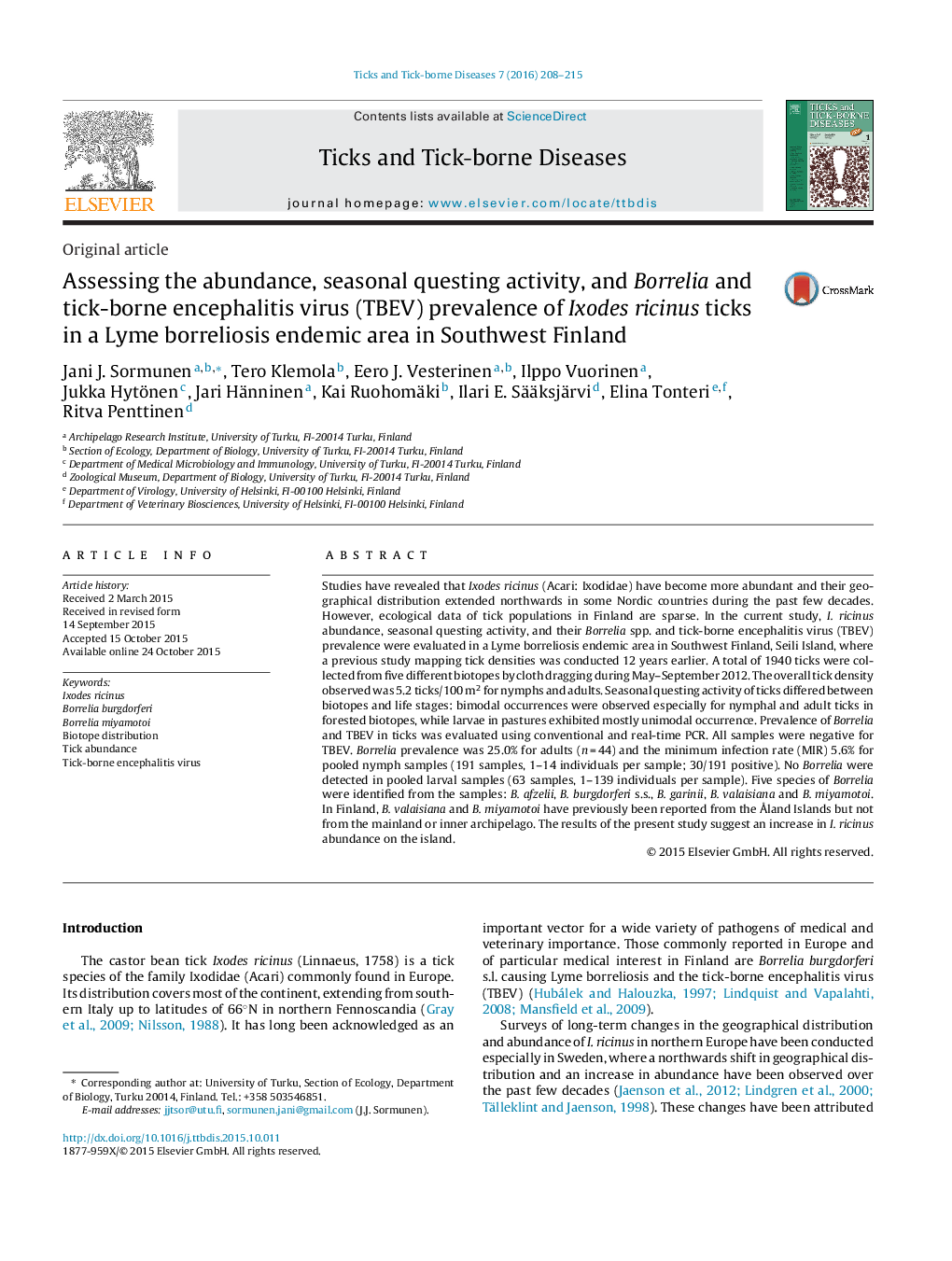| Article ID | Journal | Published Year | Pages | File Type |
|---|---|---|---|---|
| 5807059 | Ticks and Tick-borne Diseases | 2016 | 8 Pages |
Studies have revealed that Ixodes ricinus (Acari: Ixodidae) have become more abundant and their geographical distribution extended northwards in some Nordic countries during the past few decades. However, ecological data of tick populations in Finland are sparse. In the current study, I. ricinus abundance, seasonal questing activity, and their Borrelia spp. and tick-borne encephalitis virus (TBEV) prevalence were evaluated in a Lyme borreliosis endemic area in Southwest Finland, Seili Island, where a previous study mapping tick densities was conducted 12 years earlier. A total of 1940 ticks were collected from five different biotopes by cloth dragging during May-September 2012. The overall tick density observed was 5.2 ticks/100 m2 for nymphs and adults. Seasonal questing activity of ticks differed between biotopes and life stages: bimodal occurrences were observed especially for nymphal and adult ticks in forested biotopes, while larvae in pastures exhibited mostly unimodal occurrence. Prevalence of Borrelia and TBEV in ticks was evaluated using conventional and real-time PCR. All samples were negative for TBEV. Borrelia prevalence was 25.0% for adults (n = 44) and the minimum infection rate (MIR) 5.6% for pooled nymph samples (191 samples, 1-14 individuals per sample; 30/191 positive). No Borrelia were detected in pooled larval samples (63 samples, 1-139 individuals per sample). Five species of Borrelia were identified from the samples: B. afzelii, B. burgdorferi s.s., B. garinii, B. valaisiana and B. miyamotoi. In Finland, B. valaisiana and B. miyamotoi have previously been reported from the à land Islands but not from the mainland or inner archipelago. The results of the present study suggest an increase in I. ricinus abundance on the island.
